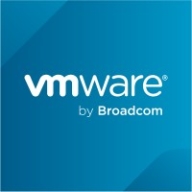

vRealize Network Insight and Elastic Observability compete in the network management and monitoring category. vRealize Network Insight might have the upper hand due to its network visualization capabilities, although Elastic Observability is robust in log collection and search functionalities.
Features: vRealize Network Insight offers network visualization capabilities, manages logs centrally, and simplifies complex network configurations. Elastic Observability offers powerful search functionality, provides an open-source option for flexibility, and emphasizes integration capabilities with various platforms.
Room for Improvement: vRealize Network Insight can improve integration with third-party vendors, enhance application awareness for deeper analytics, and adjust its pricing model. Elastic Observability needs better visualization features, more predictive analytics, and improved pricing transparency.
Ease of Deployment and Customer Service: vRealize Network Insight is typically deployed on-premises and has competent technical support, with reliance on VMware professional services. Elastic Observability offers flexible deployment options including hybrid and cloud environments, but faces challenges with technical support.
Pricing and ROI: vRealize Network Insight is expensive but provides ROI through efficient management. Elastic Observability is cost-effective with its open-source version, offering value despite its high price for small enterprises.
Elastic support really struggles in complex situations to resolve issues.
It's difficult to find necessary documentation, open tickets, and get support.
We are paying too much for technical support from VMware.
Elastic Observability seems to have a good scale-out capability.
Elastic Observability is easy in deployment in general for small scale, but when you deploy it at a really large scale, the complexity comes with the customizations.
What is not scalable for us is not on Elastic's side.
There are some bugs that come with each release, but they are keen always to build major versions and minor versions on time, including the CVE vulnerabilities to fix it.
It is very stable, and I would rate it ten out of ten based on my interaction with it.
Elastic Observability is really stable.
We are managing that one but usually we have an API connector between our firewall vendor and our VMware NSX.
For instance, if you have many error logs and want to create a rule with a custom query, such as triggering an alert for five errors in the last hour, all you need to do is open the AI bot, type this question, and it generates an Elastic query for you to use in your alert rules.
It lacked some capabilities when handling on-prem devices, like network observability, package flow analysis, and device performance data on the infrastructure side.
Some areas such as AI Ops still require data scientists to understand machine learning and AI, and it doesn't have a quick win with no-brainer use cases.
Broadcom should improve by going back to what was working before, offering the suite of tools that clients actually use, and allowing clients to decide the best options for them.
The license is reasonably priced, however, the VMs where we host the solution are extremely expensive, making the overall cost in the public cloud high.
Elastic Observability is cost-efficient and provides all features in the enterprise license without asset-based licensing.
Observability is actually cheaper compared to logs because you're not indexing huge blobs of text and trying to parse those.
Broadcom is known for increasing product prices, making them expensive compared to what people used to pay.
The most valuable feature is the integrated platform that allows customers to start from observability and expand into other areas like security, EDR solutions, etc.
the most valued feature of Elastic is its log analytics capabilities.
All the features that we use, such as monitoring, dashboarding, reporting, the possibility of alerting, and the way we index the data, are important.
One of the biggest problems with VMware NSX is logging, and vRealize Network Insight helps by providing comprehensive logs.
| Product | Market Share (%) |
|---|---|
| Elastic Observability | 2.9% |
| vRealize Network Insight | 0.5% |
| Other | 96.6% |


| Company Size | Count |
|---|---|
| Small Business | 8 |
| Midsize Enterprise | 4 |
| Large Enterprise | 16 |
| Company Size | Count |
|---|---|
| Small Business | 11 |
| Midsize Enterprise | 9 |
| Large Enterprise | 41 |
Elastic Observability offers a comprehensive suite for log analytics, application performance monitoring, and machine learning. It integrates seamlessly with platforms like Teams and Slack, enhancing data visualization and scalability for real-time insights.
Elastic Observability is designed to support production environments with features like logging, data collection, and infrastructure tracking. Centralized logging and powerful search functionalities make incident response and performance tracking efficient. Elastic APM and Kibana facilitate detailed data visualization, promoting rapid troubleshooting and effective system performance analysis. Integrated services and extensive connectivity options enhance its role in business and technical decision-making by providing actionable data insights.
What are the most important features of Elastic Observability?Elastic Observability is employed across industries for critical operations, such as in finance for transaction monitoring, in healthcare for secure data management, and in technology for optimizing application performance. Its data-driven approach aids efficient event tracing, supporting diverse industry requirements.
VMware vRealize Network Insight delivers intelligent operations for software-defined networking and security. It helps customers build an optimized, highly-available and secure network infrastructure across multi-cloud environments. It accelerates micro-segmentation planning and deployment, enables visibility across virtual and physical networks and provides operational views to manage and scale VMware NSX deployments.
We monitor all IT Infrastructure Monitoring reviews to prevent fraudulent reviews and keep review quality high. We do not post reviews by company employees or direct competitors. We validate each review for authenticity via cross-reference with LinkedIn, and personal follow-up with the reviewer when necessary.